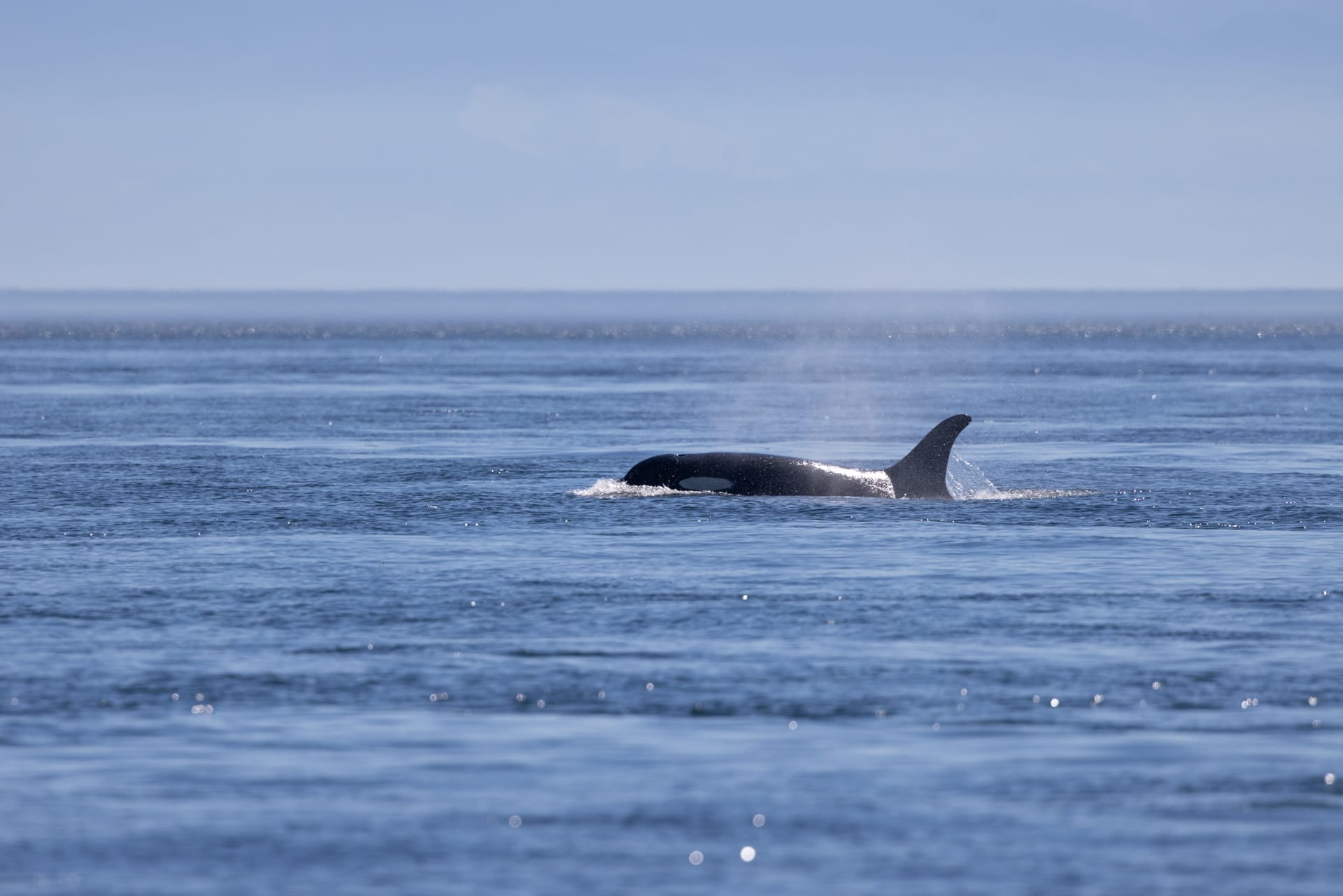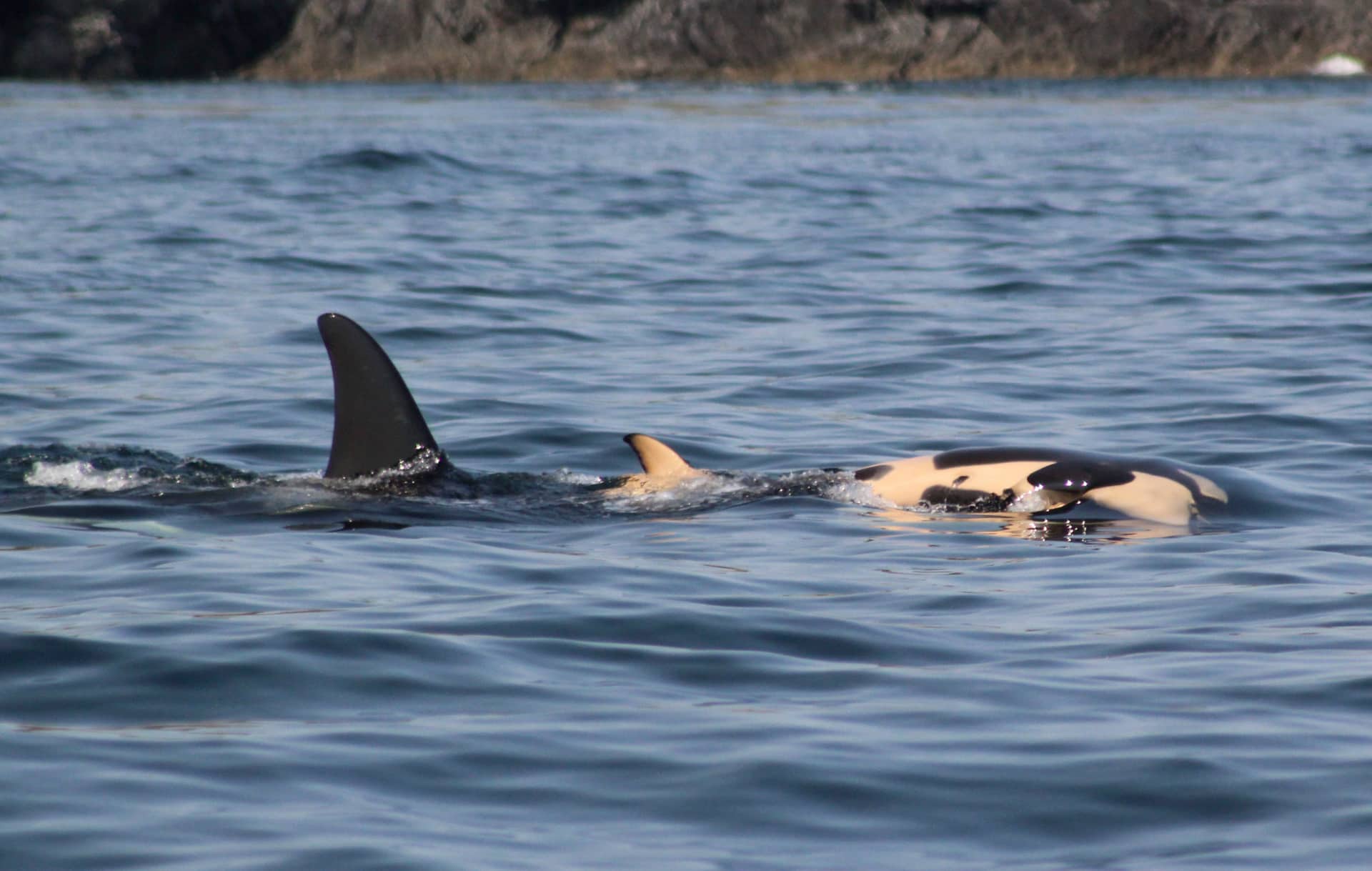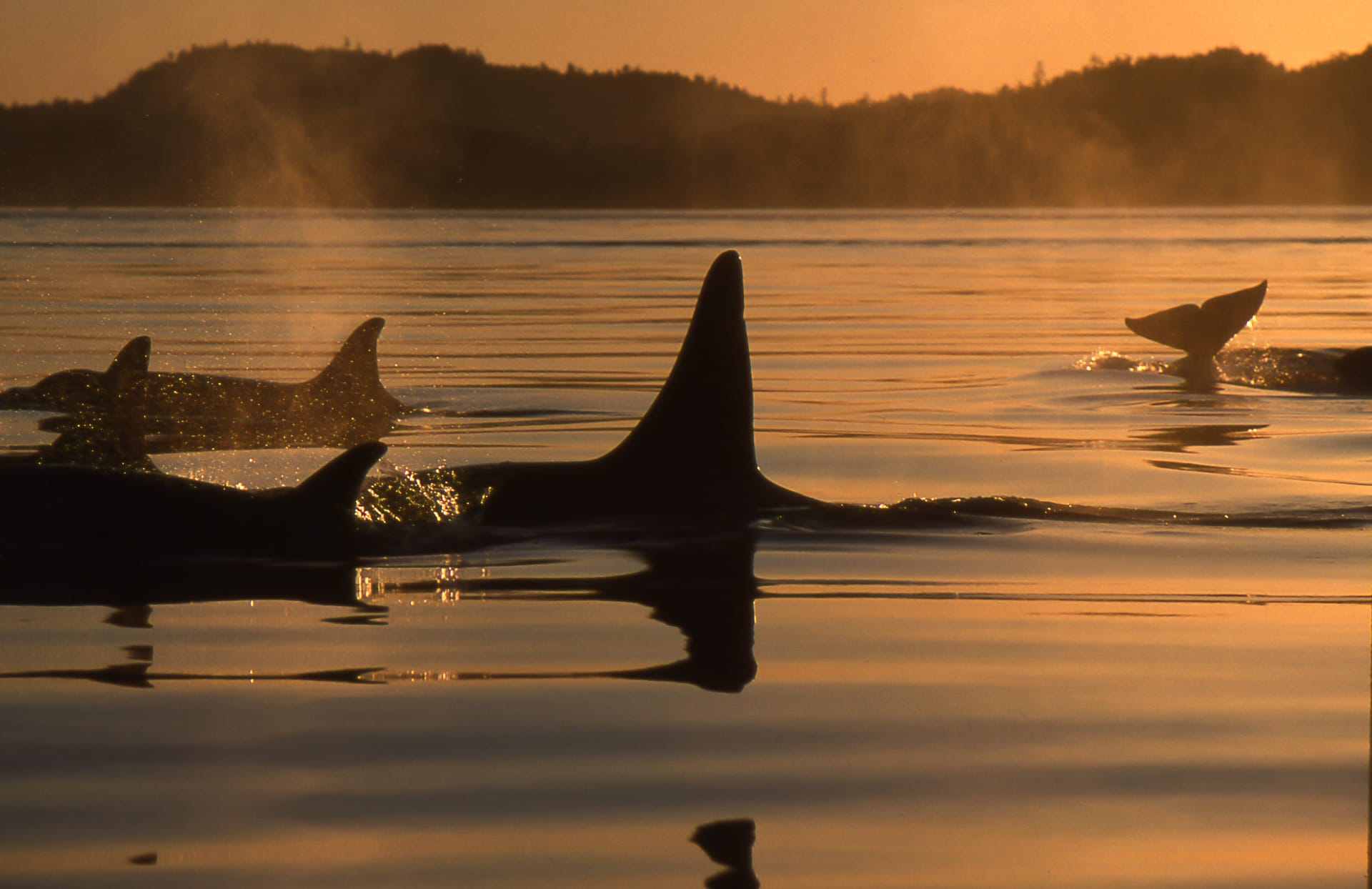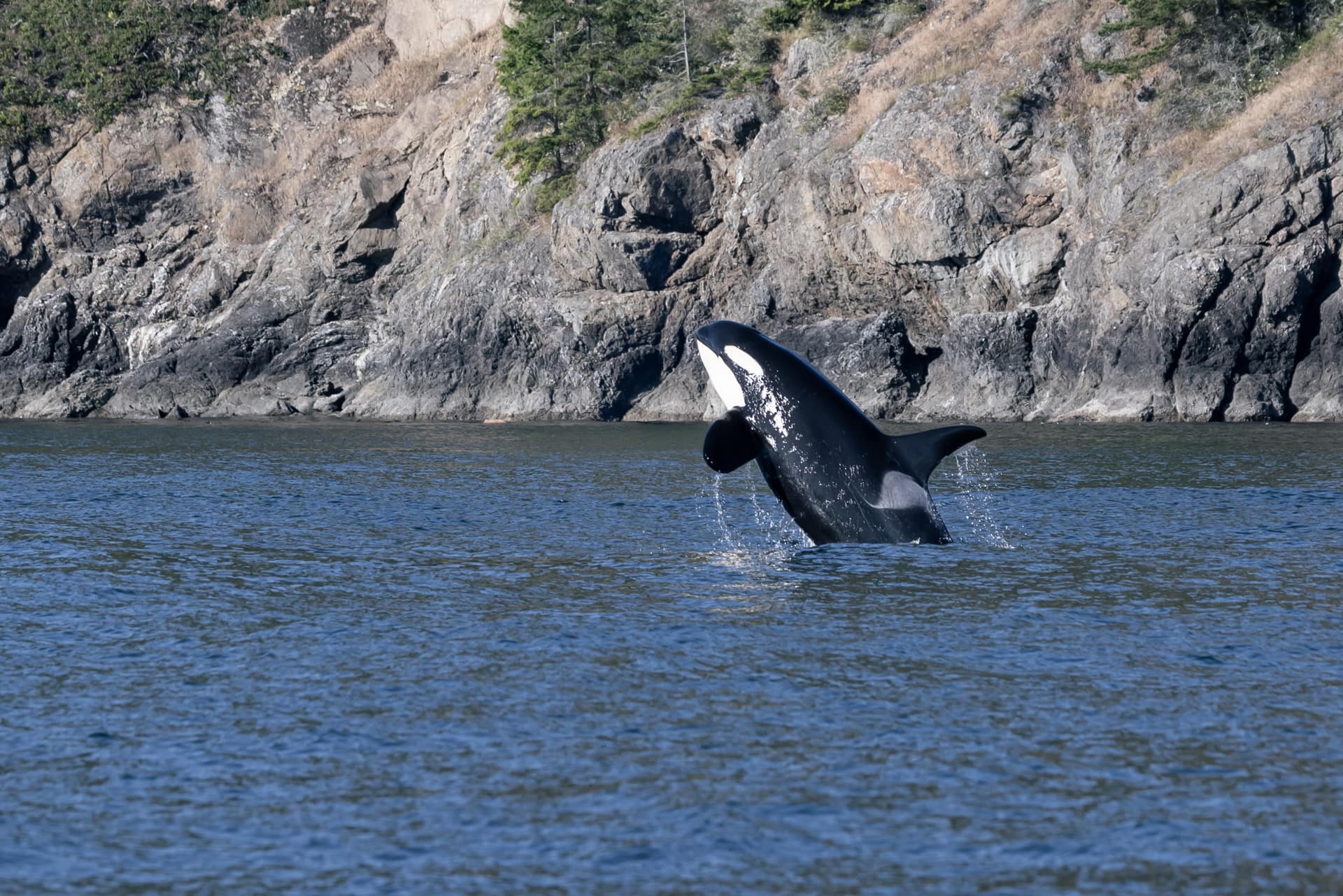
On June 30th 2022, the Washington Department of Fish and Wildlife issued an emergency order asking vessels to keep at least one-half nautical mile away from the Southern Resident killer whales, as 13 members of this endangered community have just been designated as “vulnerable.”
Vulnerability often refers to pregnant females, and there are two pregnancies this year. However it also refers to whales in poor body condition, including showing signs of emaciation. Two other youngsters are also flagged as they’re considered still small for their age. “It’s alarming that we have concerns over 15 individual whales,” declared Dr. Deborah Giles, Wild Orca’s Research and Science Director. “That’s 20% of the whole population,” she added “it’s simply unprecedented.”
A study released just one week earlier by Canadian scientists, showed that from 2018 to 2020, Chinook salmon abundance was too low to meet the daily energy needs of the Southern Resident killer whales. It’s likely that this trend will continue given that Chinook fishing is permitted from Alaska to California—even though some Chinook populations of importance to these whales have been on the Endangered Species list since 1990. Little wonder that there are less Southern Residents today than when they were first listed as endangered in 2005.
“Even the so-called baby-boom turned out to be a bust, with half those calves not surviving to 5 years-old,” said Giles. “The two youngsters of concern this year are from that cohort,” she added. “The truth is, we should be seeing six to seven new calves born every year—as we are seeing in the mammal-eating population of killer whales. Instead we are left celebrating if a single calf survives. The fecal samples collected since 2010 reveal that most pregnancies fail due to insufficient prey.”
The Governor’s Task Force concluded in 2018, but little has changed. In 2020, a workgroup headed by NOAA Fisheries concluded that additional fishing restrictions—to leave more Chinook for the Southern Residents—are unwarranted unless Chinook abundance falls to the lows of two decades ago. Yet now we know that these whales were food limited for at least three of the last five years.
Bold measures are needed now. Breaching the lower Snake River dams is imperative. Meanwhile, NOAA Fisheries must allocate a portion of the available Chinook to these whales, and close or at least severely limit non-treaty commercial Chinook fishing in known killer whale fishing hotspots. Fishermen could be compensated for these closures, as Canada has done in recent years to save Pacific salmon. Yet Canada’s actions alone cannot suffice, when 97% of all Chinook caught in the Southeast Alaska fishery originate in rivers from British Columbia to Oregon.
Our government must step up now before it’s too late.





